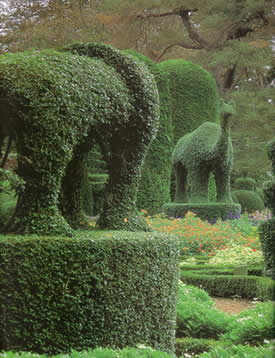
![]() Printable
PDF version
Printable
PDF version
The art of topiary has been practiced for centuries.
It comes in many shapes and styles from table-top
houseplant topiaries kept indoors to elaborate shrub
topiaries in the landscape. Sometimes topiaries sculpted
from shrubs depict animals, people or other recognizable
objects, sometimes they are more abstract with globes,
boxes, and pyramids. Shrub Topiaries take some time
to develop but often make the biggest visual impact.

